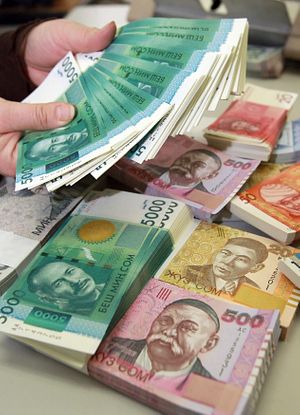On August 28, the Kyrgyz Central Bank maintained its base interest rate at 5 percent, the fifth consecutive decision to keep rates constant and low. This is a sign that the financial regulator has managed to curb inflation just enough that it will not need to intervene again on the rate at least until the end of the year. The Central Bank said yearly inflation to July 2017 stood at just 3.6 percent, after galloping in the past few years beyond the planned corridor at 6 to 7 percent. Monetary instability, in fact, was yet to fade away from the memory of local residents. The Central Bank had to keep interest rates high until mid-2015, when they were raised to 10 percent.
The low rate in Kyrgyzstan could also help banks become more competitive in lending, easing their own rates and allowing borrowers to approach sustainable credit. In the first six months of 2017, the volume of mortgages trebled compared to the previous year, mostly due to the reduced interest rates. The State Mortgage Company (GIK in its Russian acronym), established within the framework of the Affordable Housing 2015-2020 program, lent 801 million som ($11.7 million) out of 2.5 billion som ($37 million) of total mortgages in the first half of 2017, compared to a total lending of 780 million som ($11.4 million) in the same period in 2016. In August, the controversial Russian-Kyrgyz Development Fund, established two years ago, also reduced its lending rate from 12 to 10 percent.
Kazakhstan, which seems to have overcome the galloping inflation of 2015-2016, is gradually reducing its base rate to give more breathing room to local banks. On August 22, it cut its base rate from 10.5 to 10.25 percent. Annual inflation returned within the 6-to-8 percent corridor targeted by the Central Bank and stood at 7.1 percent in July 2017. Notably, yearly inflation one year earlier had become a real headache for the Kazakh regulator, rising to 16 percent. Now the Bank said it plans to keep the rate stable until the end of the year, as exchange rate, liquidity, and inflation are all under control. At the same time, Kazakhstan’s Central Bank announced that it will inject up to $3 billion into the banking sector to help commercial lenders get rid of the bad loans in their portfolio. Pressure on credit, however, remains high and banks are still struggling to provide affordable loans to their customers, according to a recent report.
Neighboring Uzbekistan has hinted repeatedly that it is on track to embark on a new monetary course after the power transition from late-President Islam Karimov to his loyal successor Shavkat Mirziyoyev. In July 2017, an International Monetary Fund team concluded its visit to the country applauding the proposed reform aimed at “unifying exchange rates and allowing a market-based allocation of foreign exchange resources.” While the government eyes monumental macroeconomic steps, however, it has had to raise significantly the interest rate. After appointing a new chief, the Central Bank increased its base rate from 9 to 14 percent, in an effort to contain inflation, officially at 5.7 percent. Going beyond rubber-stamped statistics, however, the sum currency is said to trade at 9,000/$1 on the black market, more than double the official exchange rate. Despite the calls for reform, Mirziyoyev’s first steps have put unbearable pressure on local consumers and, ultimately, on commercial banks.
Tajikistan’s Central Bank sharply increased its refinancing rate to 16 percent in March 2017. The rate is now double compared to the end of 2014. The country, which is undergoing a crippling banking crisis, needed to curb inflation and maintain the exchange rate with the U.S. dollar at a sustainable level. At the end of 2016, the government had to intervene with $490 million to bail out two major banks, Tojiksodirotbank and Agroinvestbank, as bad loans grew up to 59 percent of the total lending portfolio.
Both Kyrgyzstan and Kazakhstan have shown signs of recovery from the regional financial crisis and seem to be trying to mend the last wounds of their financial sectors to help boost lending and consumption. Uzbekistan and Tajikistan, on the other hand, seem to have a longer road ahead. Uzbekistan could have the most challenging task to accomplish if its leadership is serious about overhauling financial and monetary policies, while Tajikistan continues to sail in troubled waters, with its permanently dysfunctional banking sector.

































